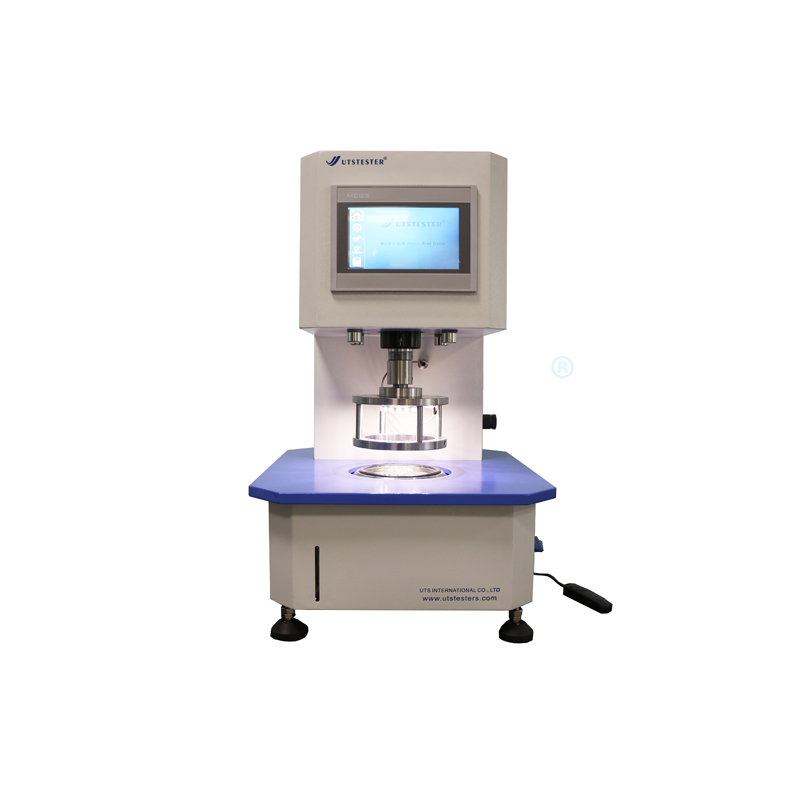 +86 152 6060 5085
+86 152 6060 5085
 +86 152 6060 5085
+86 152 6060 5085
Blog
Catalog
Latest Blog
The production and manufacturing processes of textiles are relatively complex. The clothes people wear actually go through countless processes before they are transformed from cotton or yarn into fabric products. Among them, there are hundreds of testing categories for textiles and clothing. For example, the testing of textiles includes testing items such as shrinkage, fading, water permeability, thermal insulation... etc.
1. Hydrostatic pressure (WaterProofness abbreviated as: WP):
The outdoor fabric industry customarily calls water pressure resistance, expressed in mmH2o, which refers to the strength of water pressure per unit area. Under standard laboratory conditions, the fabric withstands the pressure of distilled water sprayed upward, and the maximum water pressure is recorded, such as water pressure resistance of 5000mmH2o. That is, the unit area can withstand a maximum pressure of 5m without leakage.
Commonly used test standards: American standard AATCC 127; Japanese standard JIS L1092B; European standard: ISO 811;
The water pressure resistance test is divided into two methods: before washing and after washing:
(1)Test before washing: Domestic outdoor brands generally test the water pressure resistance value before washing, but not the value after washing. If the water pressure resistance value drops greatly after washing several times, it may drop by about 1000-3000mmH2o;
(2) Post-wash test: Famous foreign outdoor brands usually test the water pressure resistance after 5 washes. THENORTHFACE even uses the method of testing the water pressure resistance after washing 20 times. Due to the test after multiple washes, the water pressure resistance value drops very much, so The test method is that any coating factory or film lamination factory must use better materials for processing. For example, the water pressure resistance of coated fabrics requires 5000mmh2o after 5 washes, so it must be at least 7000-8000mmh2o before washing; of course this requirement Will result in higher prices!
2. Air permeability (MethodAirPermeability abbreviated as: MAP):
It means the performance of air permeability through the fabric; under the specified pressure difference condition, the air flow rate vertically passing through a given area of the sample within a certain period of time is measured, and the air permeability is calculated. The air flow rate can be measured directly or converted by measuring the pressure on both sides of the flow aperture. This is called true breathability!
Testing standards: American standard ASTM D737, European standard ISO 9237, Japanese standard JIS L1096;
Breathability units can be expressed in mm/s or cm3/cm2/s;
3. Water-proof:
Under the standard laboratory, use distilled water to spray on the sample through a funnel, and compare it with the waterproof standard sample for rating;
Commonly used test standards include American standard: AATCC 22; European standard: ISO 4920;
There are three types of water repellent: ordinary waterproof (WaterRepellent, abbreviated as: W/R), durable water repellent (DurableWaterRepellent, the outdoor fabric industry is accustomed to call it super water repellent, abbreviated as: DWR), and Teflon (TEFLON) waterproof;
① Ordinary waterproof (W/R): After washing the clothes a few times, the surface will no longer be waterproof. Generally, ordinary waterproof is enough for outdoor leisure. If you often go hiking or go to a mountain with a certain altitude, the weather on the mountain is changeable and it may rain at any time. In the rain, ordinary waterproof clothing will not be waterproof after being washed several times, causing the surface of the clothing to get wet, and wearing it will increase the weight on the body.
② Super water repellent (DWR): Carbon 6 waterproof made by Daikin in Japan can maintain an effect of 80 points (European standard level 3) after 20 washes; in the past, carbon 8 waterproof can achieve an effect of 80 points after 30 washes. The fluorine content does not meet EU standards and has been banned by the EU.
③ Teflon (TEFLON), produced by DuPont in the United States, is very well-known. It has three-proof effects such as waterproof, anti-fouling, and oil-proof. The price is relatively expensive. If you buy this brand of waterproof, you can provide a Teflon hangtag, but Teflon Disadvantages: The water-repellent effect is not as good as Carbon 8 and Carbon 6;
4. Moisture permeability (abbreviation for MoistureProofness: MP):
Moisture vapor permeability is expressed in units of g/m2/24h. It means that under certain standard laboratory conditions, a specific humidity difference is formed on both sides of the sample. Water vapor enters the dry side through the sample and is measured through the moisture permeability cup. The change in weight over time can be used to determine parameters such as the water vapor transmittance of the sample.
There are two testing methods for moisture permeability: straight cup and inverted cup;
Cup correcting method: American standard ASTM E96 A, C, E; Japanese standard JIS L1099 A1;
Pour cup method: American standard ASTM-E96, Japanese standard test JIS L1099B1;
This test uses pre-wash data! Domestic outdoor practitioners and outdoor enthusiasts all call moisture permeability breathability, or moisture permeability directly called breathability. It is incorrect and imprecise to confuse these two terms together. Breathability and moisture permeability are completely different. A concept that needs to be distinguished and correctly understood;
The fabrics with the above three functional indicators are called waterproof and breathable fabrics, also called windproof, waterproof, warm and breathable fabrics. The simple understanding is that rainwater from the outside cannot get in, and the sweat inside is discharged through the pores of the coating and membrane!

Email: hello@utstesters.com
Direct: + 86 152 6060 5085
Tel: +86-596-7686689
Web: www.utstesters.com